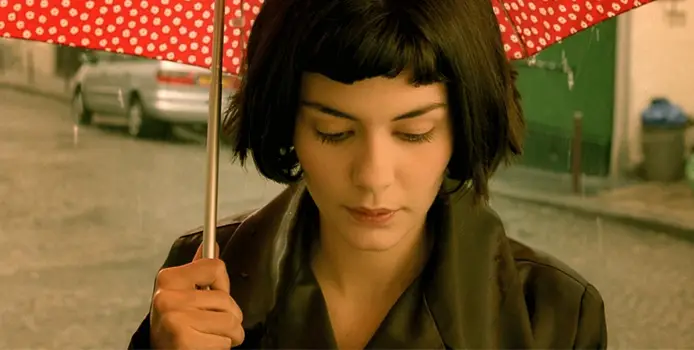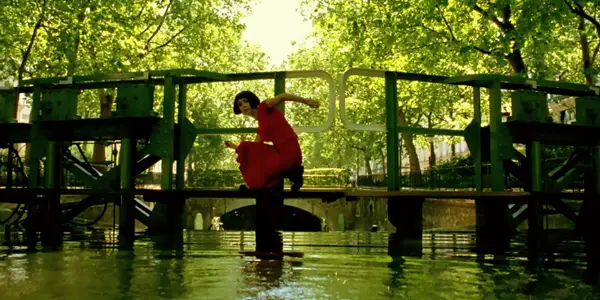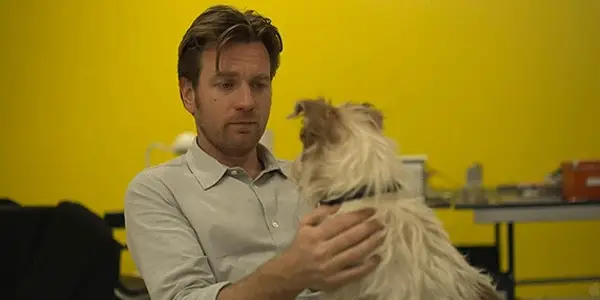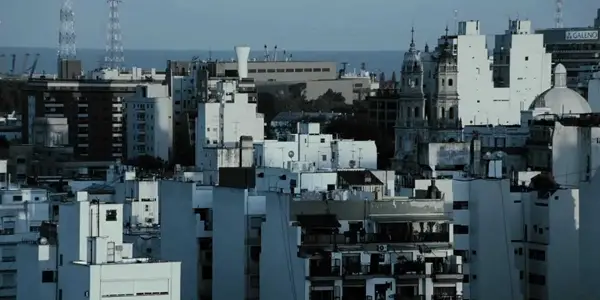Loneliness in Film: An Analysis of Colours

Freelance film worker and a current film Phd student in…
Breaking the boarders with transnational themes and making people cry and laugh in the same way? Genre as a global system? Why not! Looking at the popular genre combination of romance and comedy this is very much possible. And I am not talking about hangovers and comedy arising from friends-with-benefits relationships. Let us move away from the classical Hollywood entertainment and get observe emotions portrayed in art movies. Cruelly funny or painfully dreamy, the theme is the same – alienation of the subject from the society. And yes, it is the same in art cinema across the world.
French Le fabuleux destin d’Amélie Poulain (2001), American Beginners (2010) and Argentinian Medianeras (2011) represent three very different cultures; French as Europe’s central point of artistic cinema, also taking in account that Paris is a cosmopolitan city; Argentinian because it is one of “the newer one’s” of South American cinema (Foster, 1997); and American because of Hollywood’s global success and recognition all around the world can reach out of the commercial genre. These three movies all deal with the characters’ loneliness and detachment from the world and have a unique but collateral symbolism in cinematographic features. A closer look at it will provide an answer to the question of codes crossing the borders.
Paris, Los Angeles, Buenos Aires: Hybrids
European film is not in vain marked as the ethnic “fortress Europe”. Its artistic expressionism and stylistic schools attract attention elsewhere in the world, especially true for contemporary French, Spanish and Italian film. Two categories of French film, one marked by emphasis on national identity, the other – “hybrids”, combine generic identities or so called neo-Hollywood genre (Moine, 2007). We are much more likely to recognise the codes used in hybrids. Stigsdotter comments on the result of research surveys in British newspapers: “[…] many respondents were of the opinion that Amélie could have been set anywhere in the world […] “, (2007:209). Humour is a type of communication in the society and the interest for humour as cross-cultural phenomenon is growing among people: “The comedy is subversive enough to satisfy the most cynical of tastes and performances all round are first rate. Le fabuleux destin d’Amélie Poulain […] is just that: a fabulous, wonderful and uplifting film that will strike a chord the world over,” (Talk Talk).
Jean-Pierre Jeunet approaches the negative experiences and emotions in an easy tone. Amélie is a shy and quirky waitress with enormous imagination that embarks on a journey for love, a man similar to her kind. The reason for her alienation from the ‘normal’ world is in the fact that Amélie was lonely as a child. When her mother dies (being hit by a person’s suicide jump from the building), we already notice the first cinematic feature that is recognisable throughout the whole film. Dressed in red, Amélie sadly looks through the window when the voice over explains how years went by. The camera tilts down on green coloured flowers and her teddy-bear. We are introduced into her dreamy way of life.

Grown up the alienation continues; distancing herself from social world, the scene of throwing rocks into the river paints her in a red dress while surrounded by green river and green shades of the trees, flowers and the bridge she is on. The use of primary monochromatic colours, red, yellow and blue, makes an impact on us. In Amélie, props and costumes (but also natural settings) are intentionally accented by the use of them; our attention goes to details and draws the eye to the narrower sight spectre. Focusing on one thing works as meditation; while we are watching the blue arrows drawn on the street, we are more likely to make narrative and meaning connections (decode the codes) faster.
Sad and lonely or alone and happy
Loneliness is combined with sadness in Amélie only a few times. There are two scenes in the film that portray Amélie crying in her bed and in front of the television; first when she is told by Dufayel that she is a dreamy introverted coward, her anger turns into sadness and loneliness. This is a wide shot of her on the couch, again stress on the colours and followed by a detailed shot of the television. The second is when she bakes something behind the table after Nino has left by mistake with someone else. Daydreaming of him she is awakened by her cat, which also functions as a symbol of loneliness (cats as independent creatures that wander alone), and she bursts into tears.
These are the direct examples “in need for an interpretation”: a few high and low angle shots of her at the station, making her seem very small and lost. But other people in the bar have an issue in loneliness too. Humour is achieved by cinematic approaches of zooming in on their faces in humourous dialogue, image of the landlady’s dead dog looking at his master’s photo, her weird father with his obsession of taking care of his dead wife’s shrine and his later addition to it – the gnome, which later “decides” to take a trip around the world, what makes the father even more sad and lonely, the shot of a blind man in the underground with a playing gramophone in his lap and a high angle POV shot of Dufayel eating his dinner alone, etc.
This film is about lonely and alienated people. However, these negative feelings are turned into quirkiness, dreaminess, shyness, special”, different, not ordinary, innocent, nutty and so on. This is what makes these characters loveable. The atmosphere is additionally spiced with the classical music (piano), their likes and dislikes are edited together as short single shots of people, things or events, giving us a feeling of a continuous mind flow, a realistic sensation we get when our memories, thoughts and emotions flash before our eyes. Because it is able to have this effect, The Spectator calls Amélie a ”feel good film in the sense that it feels good about things French films usually make you feel bad about,” (Steyn, 2001:74 in Stigsdotter, 2007).
Beginners plays with the “sweet-sour” emotions as well. It is a story of warm people and ”accepts every character in a non judgemental way; they open up, coming out of their shells in time to surpass their own limitations, and discovering that when it comes to love we’re all beginners” (Reed, 2011). Every character in this film, except for Andy, the father’s new young boyfriend, has a loneliness issue and director Mike Mills enhances the audience’s comprehension of this emotion with his film style even more.

However, the use of colours differentiates from Amélie. It uses mainly secondary and tertiary colours like purple (father’s sweater), dark green, brown, orange and pastels (used in the period when his father’s health is supposedly getting better). The only strong subtractive primary colour is yellow and it is only used in the scenes with Oliver in his work office which is actually a design studio. The wall where he hangs his drawn ideas is of very strong yellow colour. This way the creativity aspect of the character is stressed. However, it is also a place of negative emotions. His work studio represents a place where he can let go of his sadness and pain.
At first we do not understand the meaning of his drawings that we only see as detailed insert shots but at the end the whole idea is revealed to us. He is working on a project he names “history of development of sadness and loneliness”. It is a series of inserts of his life – sketches with short text lines. Through his drawings he tells us about his life (in this same way we are introduced to his relationship past at the beginning when he draws his ex-girlfriends faces and writes time frames of the relationships next to them). The colours here do not change; there are no black and whites or special flashback techniques used. ”Mills weaves the past through the present,” (Edelstein, 2011). All is done through story-telling. Its tempo is enforced with the camera movement and the shot positioning.

Shots are mainly static, with the character placed in the centre of the frame. ”Mills uses space to visually convey his characters’ loneliness – isolating them in the centre of the frame; crowding them into doorways or using a shallow depth of field that turns backgrounds into blurs,” explains Dargis (2011). With these cinematographic features and the combination of the instrumental music (mainly piano), carefully chosen to play in the moments of extreme sadness and loneliness, Mills “creates a beautiful soft palette that seems to caress the characters, occasionally interrupting the moving images with illustrations and still photographs that jump off the screen like pop-ups,” (Dargis, 2011).
Reaching South
Medianeras is the best example of a contemporary film that reaches over the borders with its global theme, connecting America with Europe. In the past, a big American influence on the Argentinian film industry was present, resulting in distribution of large amounts of Hollywood films and was afraid to orient their film culture towards European market because it might lead to “a distortion of the national style”, (Barnard, 1997). The fear was understandable as by 1980 many a director had already left to Europe to work. But after Argentina returned from dictatorship to democracy in 1983, their film industry opened up; prohibitions and taboos were broken, new narrative strategies emerged and the relationship to the audience changed. Films often appealed to international audience and the cinema began spreading transnationally (Foster, 1997).
Another antisocial, neurotic couple of characters full of phobias are Marianna and Martin, two lonely and sad people whose relationships has just failed. Their life is a mirror image of the city they live in: Buenos Aires. This is how the film starts; shots of the city at night continuing into the day, gray coloured sky and gray buildings, wires and antennas on the roofs and information on overpopulation. Architecturally the styles make no sense, everything is mixed and does not fit in anywhere.

Martin’s voice-over introduces us to the city: ”It is like bad planning of our lives: we have no idea how we want them to be. We created a culture of tenants.” He is convinced that all the depressions, suicides, panic attacks, obesity, apathy, violence are a result of this bad planning. The city’s structure is the reason. One of the best examples is the scene where Marianna looks through the window (the only one she has, ”living in the shoebox apartment”) and sees a neighbour child driving his bike on one square meter balcony, back a few inches and forward a few and back…
The colours of the apartments also do not reach over the palette of yellows, blues and greens (secondary and tertiary). Only red is used twice in the film. It is Wally, a book character she has been trying to find in the ‘Wally in the city” chapter, but never managed. At the end she sees Martin on the street wearing the same red and white striped T-shirt. That is also the moment they finally meet though they have been passing by each other all along. Martin’s loneliness is portrayed through his observations (POV shots) of the outside world; taking photographs of weed growing through the concrete, the skies but also inside, looking through the peep hole in the door if anyone will come to visit him. Marianna does the same thing. When we see her working in the shop window she sometimes sits like a mannequin while people do not even notice her.
After a long time, both of the characters decide to “let some light into their lives” and break through the wall and make a new window. These are the windows opposite each other and strategically placed when we see them from outside (one in the middle of the crotch of an underwear poster).When they “break free” physically they also break free mentally. Mise-en-scene becomes “fuller”, colours become more pastel, the scenes more key lighted and the music present – piano, changes from almost scary and painfully loud to light modern pop music.
Conclusion
These films are about quirky, lonely and yet similar people coming together. There are thematic similarities between them portrayed in their surroundings – the city. All the cities are global and have one thing in common: instead of making people feel a part of a unity, overpopulation makes them even more alienated and lonely. This is clear from the film’s picture and narrative – the way the city is represented. There are a few differences: Paris is both the ”imagined city and the real city” (Konstantarakos, 2000). Amélie is both lost in it and comes alive there. Medianeras shifts from desperate isolation and claustrophobic feeling in Buenos Aires (shoebox apartments) to a more colourful, lively, “breathing” city when love enters the protagonists’ lives. In Beginners, even Los Angeles is not just a frame of what is going on inside any more. Facing their fears and taking a path of healing, the city also becomes a part of protagonists’ lives as a breathing and living environment.
Global cities have one thing in common. As much as they isolate and alienate an individual, they are also a source of freedom. Shared symbolism in colours and other cinematic techniques gave way to emergence of genre as a “transnational common”. We all share these feelings and not only do we feel them in the same way, we are also able to portray them in the same way. Trends crossed the borders and connected people again. By playing with two most primary human emotions – sadness and happiness, cultures enter the melting pot once more.
The question is – is it at all possible to escape losing uniqueness through globalisation or are we all just a repetitive combination of symbolic codes?
(top image: Le fabuleux destin d’Amélie Poulain – source: Canal+)
Does content like this matter to you?
Become a Member and support film journalism. Unlock access to all of Film Inquiry`s great articles. Join a community of like-minded readers who are passionate about cinema - get access to our private members Network, give back to independent filmmakers, and more.
Freelance film worker and a current film Phd student in UK.














